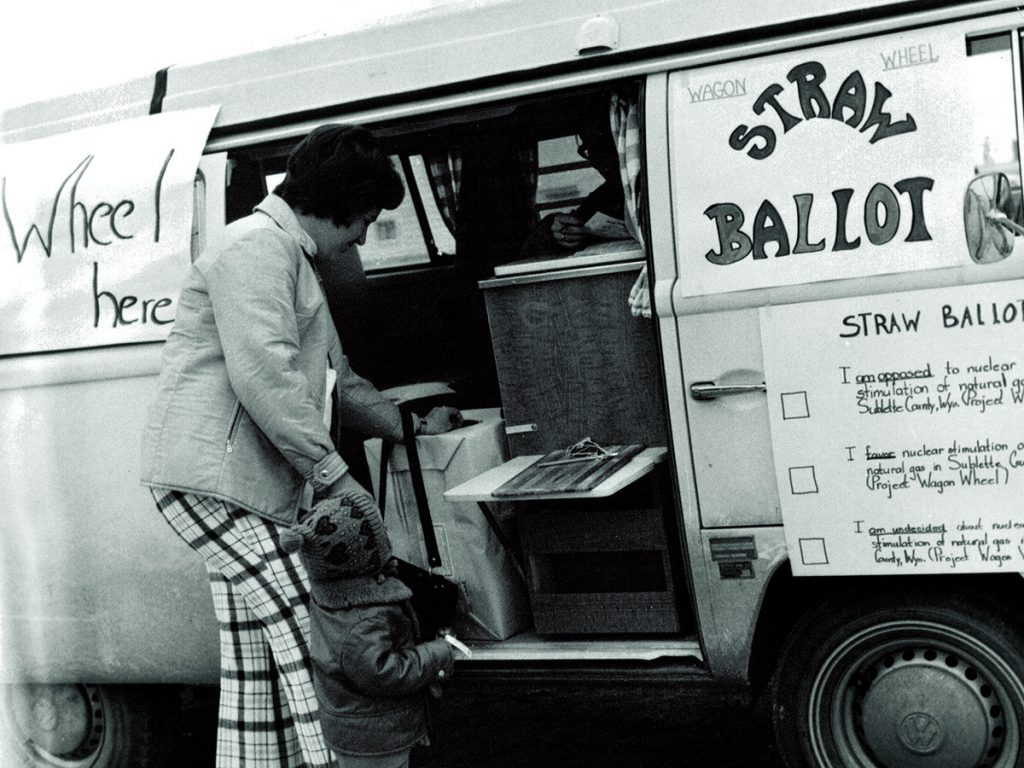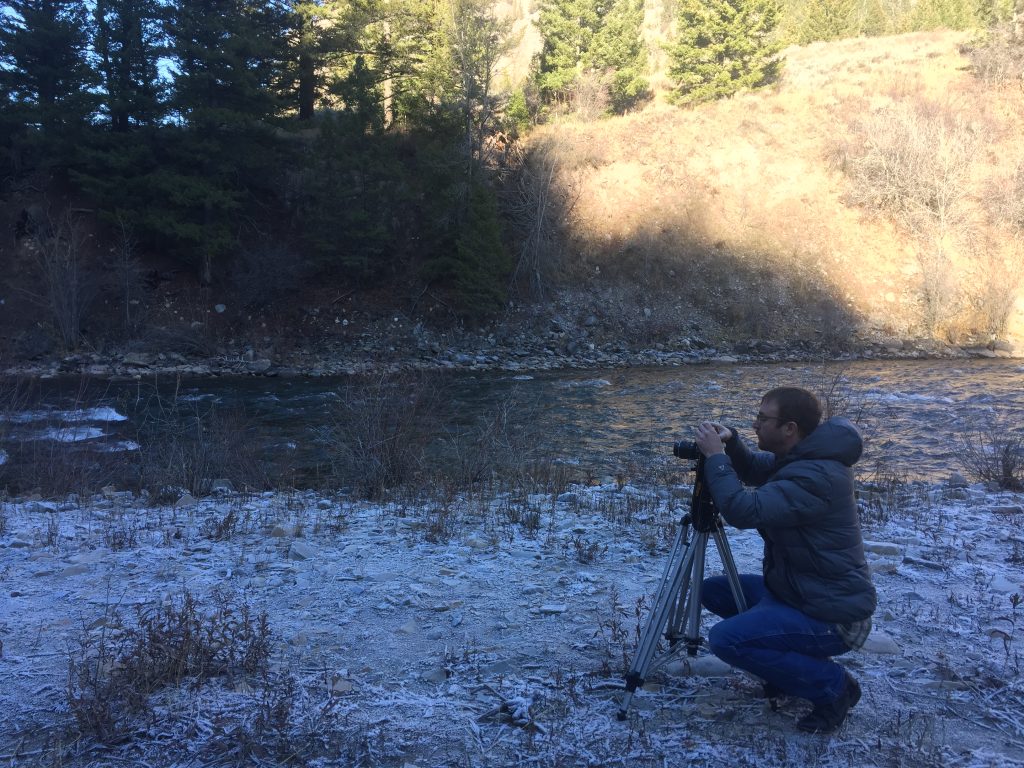Atomic Bombs in Wyoming: Emersonian’s Doc Details What Almost Happened
By David Ertischek ’01

After World War II the U.S. government formed the Atomic Energy Commission to figure out some uses for nuclear power, aside from dropping bombs in war.
“I can picture their think tank meetings. They came up with crazy ideas,” said Gregory Asay ’04. “A lot of them were for water storage or to make waterways – underground aquifers, make bigger harbors and make the Panama Canal bigger.”
The commission determined using atomic energy to frack and extract natural gas, was worth pursuing. That meant dropping coordinated kilotons of nuclear devices in areas.
The government quietly attempted atomic fracking efforts in New Mexico in 1967, as well as in Colorado and Utah several years later. Pinedale, Wyoming, a small town on the edge of the Wind Ridge Mountains, was selected as the next site.
But after learning about Project Wagon Wheel, residents pushed back.
Not many people in Wyoming know about the project, said Asay, who first heard about Project Wagon Wheel while in law school at the University of Wyoming. Wanting to learn more about the project, Asay started off making a five-minute YouTube video, and ended up making The Atomic Fracking in Wyoming: The Story of Project Wagon Wheel.
The hour-long documentary made by Asay’s production company, Tree in a Rock films, is debuting on Wyoming PBS on November 19, and Amazon Video the following day.
“I grew up in Wyoming and had never heard this story, and I couldn’t believe no one had heard of it,” said Asay, a practicing lawyer with a background in stop-motion animation for the Cartoon Network and a short film director. “And when I talked to PBS, they hadn’t heard of it. It seems like a big deal to me. I really wanted to get it out.”
Dedication to the Documentary
Asay took five years to produce the documentary. He couldn’t find much information until someone directed him to the University of Wyoming’s archives, which provided him with 18 boxes of files. One by one, Asay went through the boxes, usually on Monday nights after work until 9:00 pm. It took him two years just to wade through the boxes.
He eventually found interviews that writer/outdoorsman C.L. Rawlings conducted 20 years ago, and Rawlings, who became one of the film’s producers, agreed to let Asay use the recordings in his documentary. Author Ann Chambers Noble, who wrote a book about Pinedale’s 100-year history also became a producer, and let Asay use some of her work.

Pinedale Pushback
The Atomic Energy Commission (AEC) hooked up with the El Paso Natural Gas Company, which had lots of land leases in Pinedale in Sublette County. After selecting a field they believed was flush with natural gas, they let the community know about their plans. They hadn’t encountered much, if any, pushback in the other locations they performed tests, Asay learned through his research.
“They did these experiments and each time they get bigger, and the goal was to do a whole field. They wanted to do 400 wells with multiple explosions,” said Asay. For the Wagon Wheel Project in Wyoming, they wanted to do five 100-kiloton bombs. “There’s kind of different theories as to why they didn’t just do a 500-kiloton bomb. They were under nuclear treaties and were limited in what they could do.”
Asay said the government pushed out a press release saying what they were planning to do in Pinedale, but there weren’t a lot of specifics to the plan. They touted an estimated $650 million worth of natural gas under the ground, which would be released by atomic fracking to the great benefit of the local economy.
“Most people in Wyoming, we’re really big on energy development, and for the most part, no one objected to it,” Asay said.
But a small group of residents started asking questions, at the same time the University of Wyoming’s Take A Look program was encouraging locals to be more civically engaged.
At one fortuitous library meeting, the two groups came together and realized they needed to learn more about the project. Asay said a letter-writing campaign ensued, public meetings were held, and they spoke to nuclear scientists from out of state.
Seeing the opposition, the gas company and the head of the AEC said they would halt the project — but only if the people could demonstrate they really didn’t want it. A straw poll showed that people were against it by a 2 to 1 margin, but the gas company said the residents were just passing out bad information, and that it wasn’t a real poll.
So the residents got their congressman, Clifford Hansen, involved, and he brought the fight to Washington, D.C. Wyomingites testified in front of the U.S. Senate. The chairman of the Wagon Wheel Information Committee debated the leader of El Paso Gas Company on The Today Show.
What unfurled wasn’t a Hollywood-esque story of triumph, Asay said. Instead, it was a war of attrition. The AEC got a new leader who dropped the project, then the AEC was defunded and rolled into the Department of Energy. The project was then effectively dead.
Research from the three previous atomic fracking attempts also showed that the process couldn’t extract much natural gas, and even if it could, it would be radioactive. There was also the possibility of unintended consequences, like not being able to drink milk from any exposed cows, which would hurt ranchers.
The federal government was right about Pinedale, though, which is now one of the nation’s most profitable natural gas areas, said Asay.
“One of the interesting things is listening to interviews and doing new interviews. Some of the people who worked on this thing don’t think they were successful,” said Asay. “I tend to think the main thing they did was stall it out.”
Categories